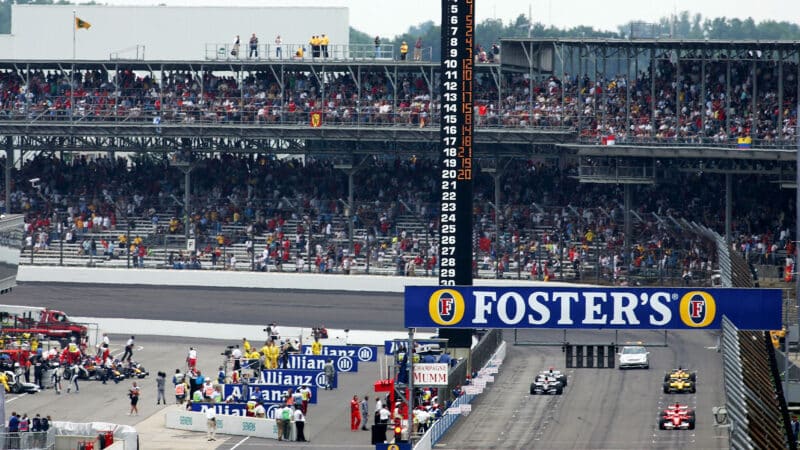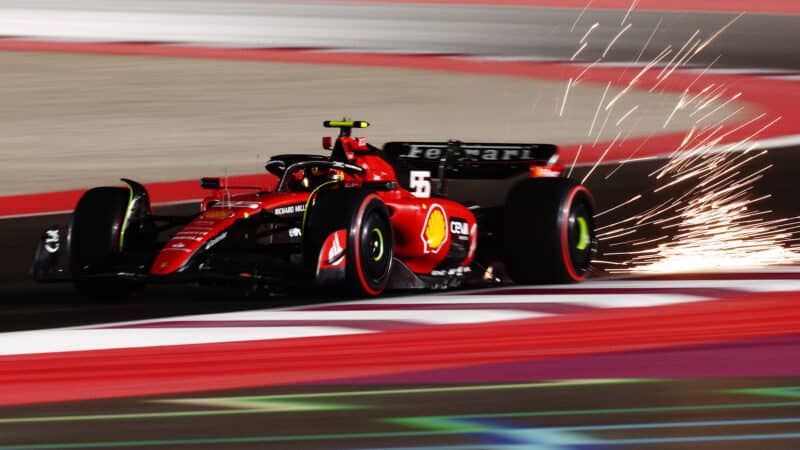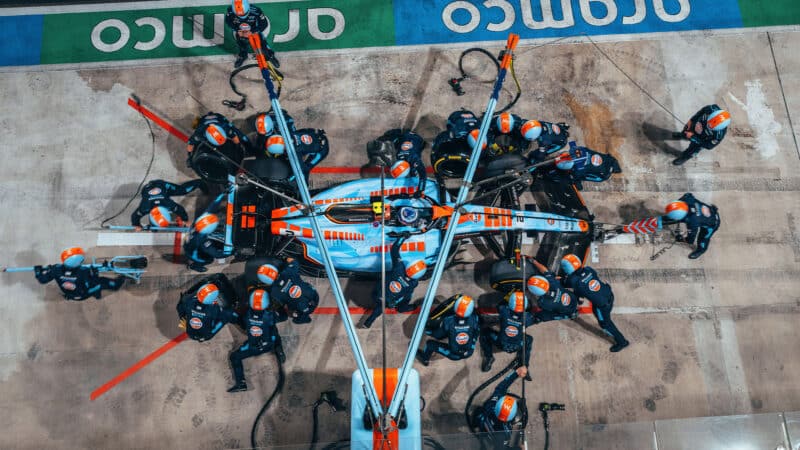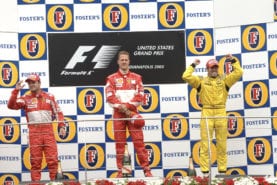Why was he so determined for the race to fail? It was convenient for at least two reasons. There was an ongoing struggle for control of the sport playing out between the automotive manufacturers on one side and the FIA (and Ecclestone) on the other. The Concorde Agreement was due to run out at the end of 2007 and for 2008 the manufacturers – Toyota, Mercedes, BMW, Renault, Honda – were threatening a breakaway series. What’s more, they were enticing the independent teams such as McLaren and Williams to come with them and the independents, upon hearing about a more equitable split of F1’s profits and more transparent management, were more than receptive. But what the manufacturer group didn’t have, and the FIA did, was the support of Ferrari. Which carried enormous heft, of course. Ecclestone had in addition convinced Eddie Jordan and Minardi boss Paul Stoddard that they’d be better staying with him than joining the band of manufacturers.
Quite by coincidence, Ferrari, Jordan and Minardi were the only three teams on Bridgestones and thus unaffected by the Michelin problem. It seemed it was just too delicious a coincidence for Mosley to ignore. Throughout the long-running arguments about the sport’s future, the trump card the manufacturers believed they had was that the FIA could not possibly run a competing world championship with only three teams. Indianapolis 2005 gave Mosley the perfect opportunity to demonstrate that he was absolutely serious in his intention to do so if necessary.

Six cars line up for the start at Indianapolis ’05, while the rest of the grid pulls into the pits
Christopher Lee/Getty Images
Secondly – and less importantly – there was the irritating matter of the tyre war. Neither Ecclestone nor Mosley wanted it. They wanted a control tyre supplier. The tyre war was costing the teams millions because they were having to conduct the tyre development testing. As the teams fought Ecclestone for a greater share of F1’s income, one very powerful argument they could present was that their costs were ramping up enormously because of the tyre war. So rather than pay the teams more money, Ecclestone and Mosley would far rather they simply eliminated that cost. Michelin had always been much more belligerent and unbending to the FIA’s control than Bridgestone. It was quite obvious that in any future F1 control tyre, the FIA’s preference would be for Bridgestone. Amplifying the impact of Michelin’s technical problem at Indianapolis by running with only three teams maximised Michelin’s embarrassment and aided immeasurably in the imposition of a control tyre. Which would in time impose a style of racing where the drivers were no longer flat-out between stints… Michelin announced its withdrawal at the end of the season.
The whole Indianapolis 2005 episode was a disgrace, where Mosley’s political machinations of power overrode the interests of the paying fan to the extent that the fans just became collateral damage. Fans who in many cases had saved up for this special event and travelled hundreds, even thousands of miles. It could so easily have been avoided but one man chose not to avoid it. Thankfully, any current day power struggles are not fought with such contempt for the fanbase. But it was also the day the tyre war died and we are feeling the implications of that still. F1 has just renewed its single supply contract with Pirelli until the end of 2027.



